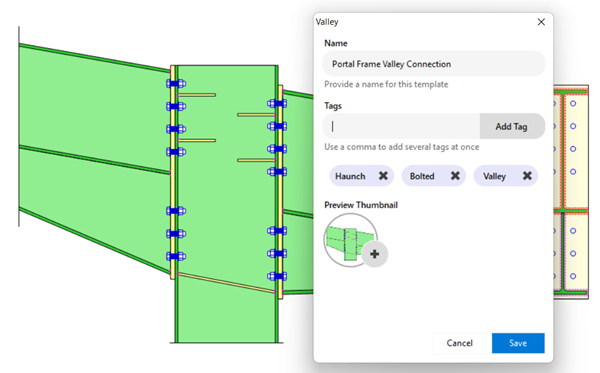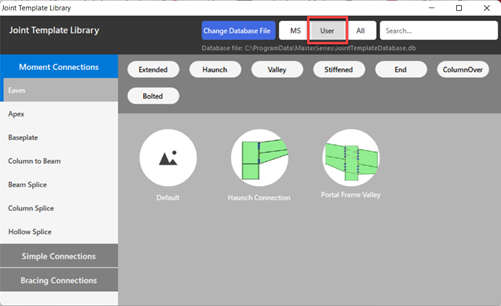MasterSeries Blog
Introducing the Updated Joint Template Library - MasterSeries Steel Connection Design
New Connection Templates for Greater Flexibility
We’ve expanded the library with an array of new default templates for various connection types, ensuring you have the right tools for every job. Here’s what you can expect:
- Toe Plate Connection Defaults: MasterSeries 2023 seen the inclusion of Toe Plate Connection Design by popular demand, using design principles laid out in the SCI 'Green Book' publications. We have included default templates for Toe Plate Connection Types. Read more on MasterSeries’ Technical Note: Beam-to-Beam End Plate Simple Connection with Flange Toe Plate
- Standard Connection Types for Common Structures:
- Portal Frames: We’ve introduced predefined connections tailored for the unique needs of portal frame structures.
- Steel Trusses (including Vierendeel Trusses): New templates cover both traditional and Vierendeel truss connections
- Multi-Storey Frame Connections: New Moment, Simple and Bracing templates simplify the design process for multi-storey steel frames.
- Domestic Connections: Including goal post frames, these templates are perfect for residential and smaller-scale projects.
- Hollow Section to Beam and Column Connections: We’ve included new templates specifically for connections involving hollow sections, giving you more options for innovative designs.
Expanded Bracing Connection Options
We’ve added extensive new templates for bracing connections, including:
- Vertical Bracing to Columns: Connections for vertical bracing to column flanges and webs, including baseplates, are now readily available.
- Vertical Bracing to Beams: We’ve added templates for bracing connections to beam flanges.
- Horizontal (Plan) Bracing: New templates for plan bracing to beam flanges and webs offer more design flexibility and precision.
Comprehensive Connection List Now Available
To help you get the most out of these updates, here’s a quick rundown of the connection types you’ll find in the library:
- Moment Connections:
- Beam to Column Flange
- Column and Beam Splices (including Hollow Sections, and Web, Flange and End-Plates)
- Column to Beam Connections (including Hollow Sections)
- Baseplates
- Simple Connections:
- Flexible End Plate (Beam to Beam and Beam to Column, including Toe Plate Connections)
- Web Angle Cleats (to Beam and Column)
- Fin Plate (to Beam and Column)
- Baseplates
- Bracing Connections:
- Vertical Bracing to Column Flange and Web (including Baseplates)
- Vertical Bracing to Beam Flange
- Horizontal (Plan) Bracing to Beam Flange and Web
Fresh Look with Updated Thumbnails and Colour Scheme
We have also refreshed all connection thumbnails with a modern colour scheme, making it simpler to identify and select the right template at a glance
Whether you’re working on complex multi-storey buildings, portal frames, or residential projects, the updated Joint Template Library has the tools you need to design with confidence and precision.
We invite you to explore the new templates and see how they can enhance your structural design projects.
Create Your Own Templates
You can save any connection design as a template and reuse it again. When you create a new template, there is an option to create a thumbnail of your connection that will represent your template in the Joint Template Library. You can also add your own tags to make your joint template library more categorised and searchable.

The new custom joint templates will be available under the User library for further usage.

Share your templates with colleagues
The MasterSeries 2022 allows sharing of your Joint Template Library. You can circulate the template file between your colleagues or even store it on a shared network location.

Explore how MasterSeries can help you design more economical solutions and boost your productivity.
Try it for yourself with a free 14-day trial.

Categories
- About
- Beam Designer
- BIM
- Composite design
- Concrete Design
- Connections
- Dynamic
- Educational
- General
- LCA
- Masonry
- MasterFrame
- Pile Cap
- Portals
- PowerPad
- Retaining wall
- Steel Design
- Webinar
- Wind Analysis